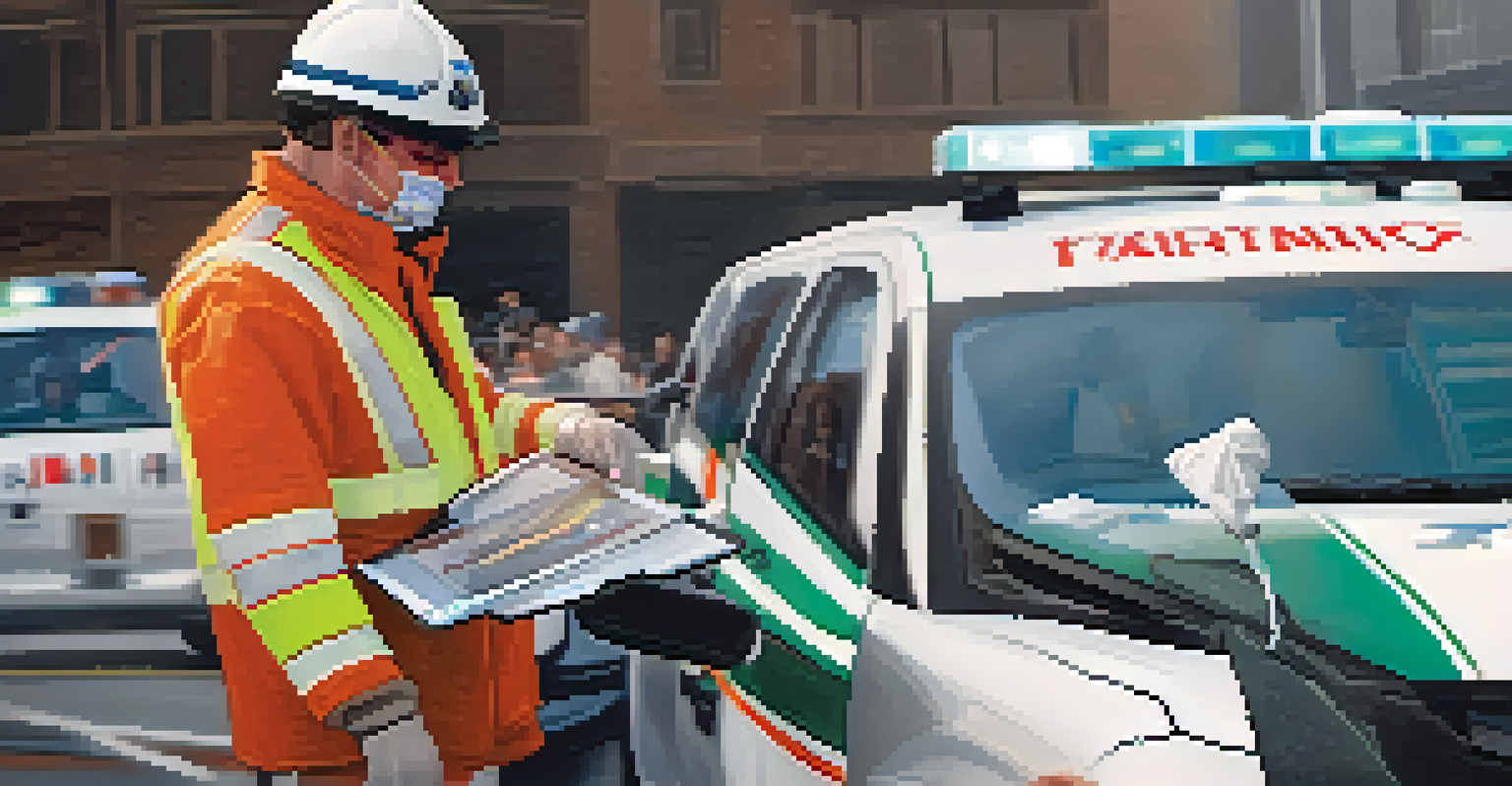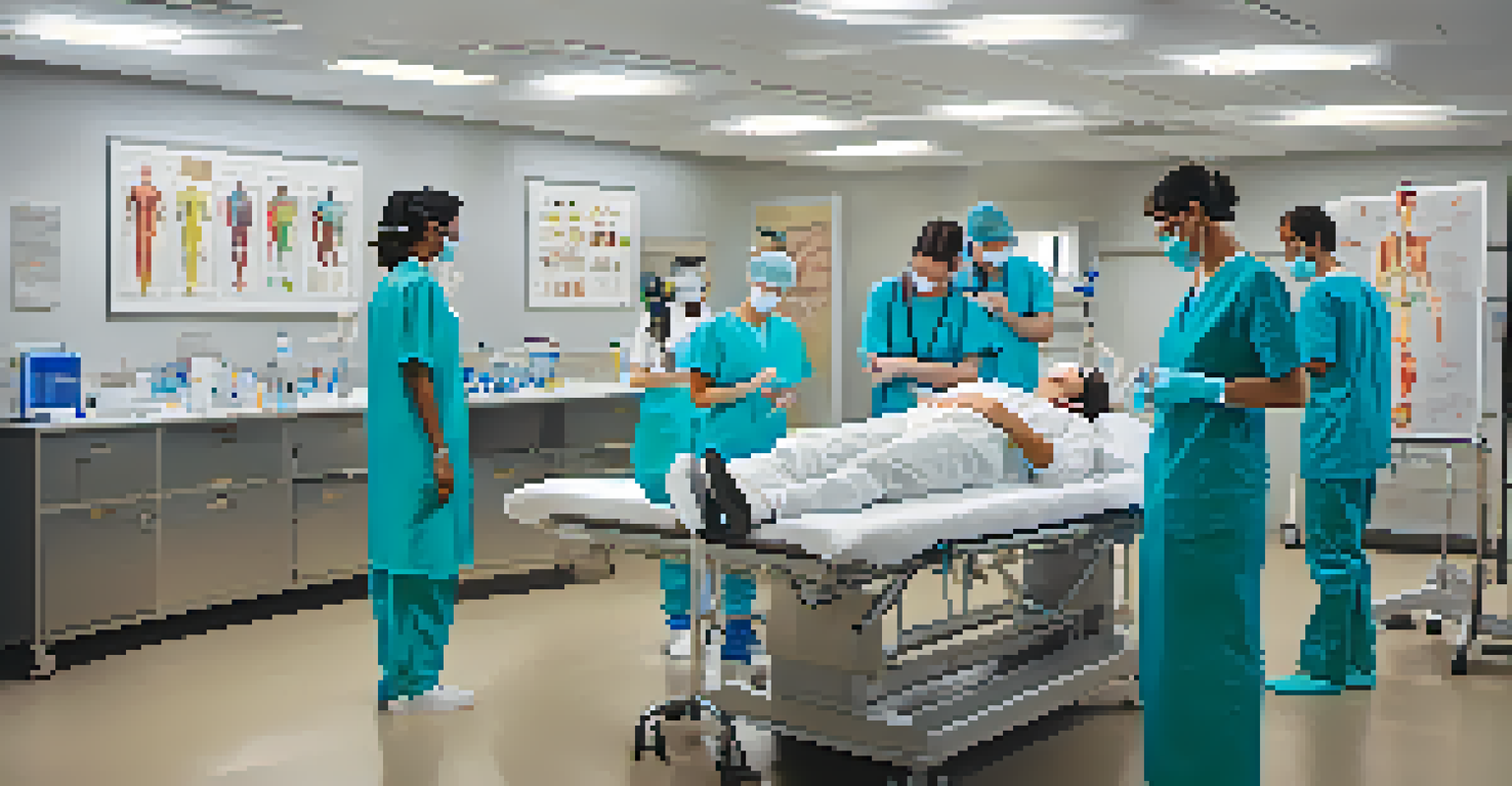The Role of Emergency Medicine in Acute Care Scenarios

What is Emergency Medicine and Its Importance?
Emergency medicine is a medical specialty focused on the immediate treatment of urgent health issues. It plays a critical role in acute care settings, where timely intervention can make the difference between life and death. Think of emergency medicine as the frontline of healthcare, ready to tackle a variety of crises, from traumatic injuries to sudden illnesses.
In emergencies, every second counts, and the ability to make quick, informed decisions can save lives.
In these high-pressure environments, emergency medicine professionals must make quick decisions with limited information. Their ability to assess and prioritize patient needs is vital, as they often encounter life-threatening situations. For instance, a paramedic responding to a car accident must quickly determine which victims require immediate care.
Moreover, emergency medicine isn't just about treating injuries or illnesses; it also involves stabilizing patients before they transition to other specialized care units. This seamless handoff is crucial for ensuring that patients receive the comprehensive care they need throughout their recovery journey.
The Initial Assessment: A Critical First Step
Every acute care scenario begins with a thorough initial assessment, a cornerstone of emergency medicine. This process allows medical professionals to quickly identify life-threatening conditions and prioritize interventions. Much like a detective piecing together clues, emergency personnel gather information from the scene and the patient to formulate an effective care plan.

During the assessment, healthcare providers look for vital signs, signs of trauma, and any indications of underlying health issues. For example, a patient presenting with chest pain might be evaluated for potential heart problems immediately. The faster these assessments are conducted, the quicker appropriate treatments can be administered.
Emergency Medicine Saves Lives
This medical specialty focuses on immediate treatment of urgent health issues, playing a critical role in potentially life-saving interventions.
This initial evaluation is not just about speed; it's also about accuracy. A well-conducted assessment can save lives, enabling emergency teams to address critical conditions like cardiac arrest or severe hemorrhage before they escalate.
Intervention Techniques Used in Emergency Medicine
Once the assessment is complete, emergency medicine practitioners implement a variety of intervention techniques tailored to the patient's needs. These can range from administering medications to performing life-saving procedures such as intubation. Each intervention is designed to stabilize the patient and manage their symptoms effectively.
Emergency medicine is not just a specialty, it's a commitment to be there for people at their most vulnerable moments.
For instance, in cases of severe allergic reactions, emergency staff may use epinephrine to quickly reverse anaphylaxis. Similarly, if a patient is experiencing a stroke, rapid interventions like thrombolysis can be critical in minimizing long-term damage. The goal is to act swiftly and efficiently, often under extreme pressure.
These techniques highlight the dynamic and diverse nature of emergency medicine. Each situation presents unique challenges, and the ability to adapt and implement the right interventions is a hallmark of skilled emergency care.
Collaboration in Acute Care Scenarios
Collaboration is crucial in emergency medicine, as care often requires a team of specialists working together. From paramedics to emergency physicians, and even surgical teams, effective communication is key to ensuring that patients receive the best possible care. Imagine a relay race where each runner passes the baton seamlessly; this is how teamwork functions in acute care.
During an emergency, each team member has a specific role that contributes to the overall patient outcome. For instance, while one physician focuses on airway management, another may handle fluid resuscitation. This division of labor allows for efficient and comprehensive patient care, particularly in high-stakes situations.
Collaboration is Key in Emergencies
A team of specialists must work together, with clear communication and defined roles, to ensure comprehensive patient care in acute situations.
Moreover, collaboration extends beyond immediate care. Follow-up discussions and debriefings after an incident help refine protocols and improve future responses. This ongoing commitment to teamwork enhances the effectiveness of emergency medicine and ultimately benefits patients.
The Role of Technology in Emergency Medicine
Technology has profoundly impacted emergency medicine, enhancing both assessment and treatment capabilities. From telemedicine tools to advanced diagnostic equipment, technology plays a vital role in how emergency care is delivered. Imagine having a consultant at your fingertips during a critical moment; that's the power of modern technology.
For example, digital imaging systems allow swift access to X-rays and CT scans, enabling quicker diagnoses. Similarly, electronic health records (EHR) provide immediate access to a patient's medical history, which can be crucial in emergencies. These technological advancements help streamline workflows and improve patient outcomes.
However, it's essential to balance technology with the human touch. While tools enhance efficiency, the compassion and expertise of healthcare providers remain irreplaceable. The integration of technology in emergency medicine aims to support, not replace, the critical decisions made by skilled professionals.
Training and Education in Emergency Medicine
Training in emergency medicine is rigorous and multifaceted, ensuring that practitioners are prepared for any situation. Medical professionals undergo extensive education, including hands-on simulations and real-world scenarios, to develop their skills. Picture a firefighter training for different blaze conditions—emergency medicine training is similarly comprehensive.
Continual education is also vital, as protocols and technologies in emergency care evolve rapidly. Regular training sessions, workshops, and certifications ensure that professionals stay current with the latest advancements and best practices. For instance, recertifying in advanced cardiac life support (ACLS) is essential for those working in emergency settings.
Technology Enhances Emergency Care
Modern technology, including telemedicine and digital imaging, significantly improves assessment and treatment capabilities in emergency medicine.
Ultimately, this commitment to training and education fosters a culture of excellence in emergency medicine. By staying informed and skilled, healthcare providers can deliver the highest level of care to patients when it matters most.
Challenges Faced by Emergency Medicine Professionals
While emergency medicine is rewarding, it also comes with its share of challenges. High-stress environments, long hours, and the emotional toll of caring for critically ill patients can lead to burnout among healthcare providers. Consider this a high-stakes game where the pressure never lets up; it requires resilience and support to thrive.
Additionally, emergency departments often face overcrowding, which can complicate patient care. When resources are stretched thin, it becomes increasingly difficult to provide timely interventions. This situation can create a challenging dynamic where each patient's needs must be balanced against available resources.

Despite these hurdles, many emergency medicine professionals find fulfillment in their work. The opportunity to make a significant difference in patients' lives, often in their most vulnerable moments, serves as a powerful motivator for many in the field.